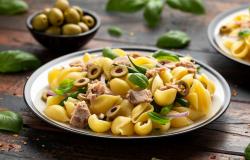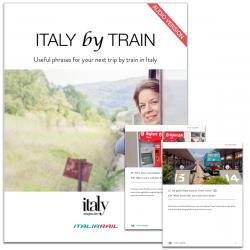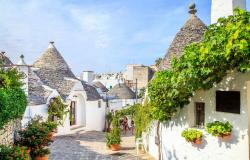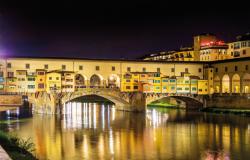Great Foods of Italy: Parmigiano-Reggiano
ITA:
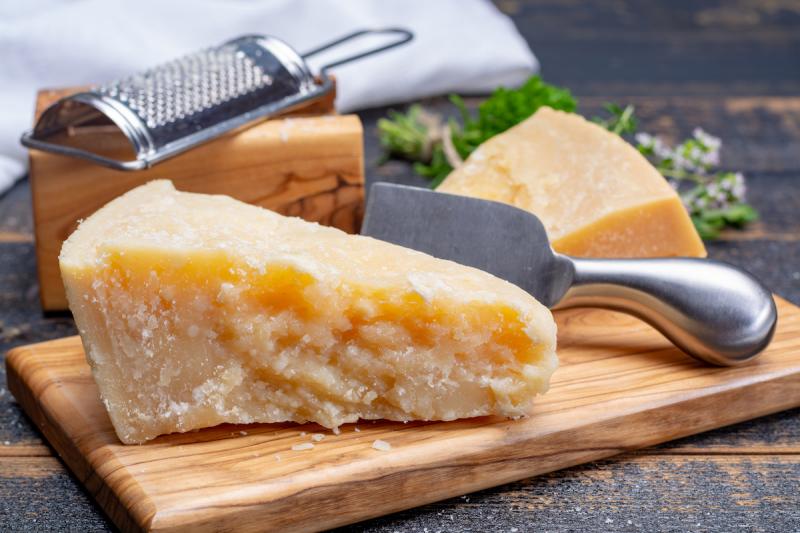
Use player to listen to Italian version

Authentic Parmigiano-Reggiano can only be produced in one specific area of the world, located in Emilia-Romagna, specifically in the provinces of Parma, Reggio-Emilia, Modena, Bologna on the left side of the Reno river, and Mantova on the right side of the Po river. Only Parmigiano produced here can obtain the PDO certification (DOP in Italian, fire-branded on the wheel of the cheese), a guarantee of the quality of the product.
The story of Parmigiano-Reggiano began in Emilia Romagna a long time ago, in the 12th century, when Benedictine monks needed to find a way to preserve large quantities of milk. They began to handcraft a large, hard cheese whose peculiarity was that, the more it aged, the more its organoleptic features improved. Nine centuries later, Parmigiano-Reggiano is still produced using the same techniques.
Parmigiano Reggiano doesn’t require many ingredients: raw cow’s milk, natural calf rennet, salt - and time.
Everything begins with the region’s unique soil and climate which determine the flavors and nutrients of the grass fed to the cows. This is reflected in the taste of the milk, the basic ingredient of Parmigiano. About 550 liters of milk are used to produce one wheel of this famous cheese!
Then, it’s the turn of the modern-day mastri casari (cheese-makers) who give Parmigiano its shape and texture.
Finally, the equally important aging phase begins. Wheels remain in the aging room a minimum of 12 months. At that point, experts from Consorzio Parmigiano-Reggiano examine each wheel with a special hammer to make sure they comply with the rigorous standards of the consortium. If requirements are met, the wheels are fire-branded with the famous oval certification mark. Most wheels are left to age for another 12 months, as 24 months is the ideal aging time.
Each wheel of Parmigiano is different, and each cheese factory produces different kinds of Parmigiano because it’s an entirely artisanal process where the expertise and sensitivity of the casaro is fundamental.
Tortellini and other stuffed pastas that the region of Emilia-Romagna is famous for wouldn’t be the same without Parmigiano, which is used often and widely in the local cuisine, not just as an ingredient, but also by itself, to open or close a meal.
Il vero Parmigiano-Reggiano può essere prodotto solo in una specifica area del mondo: in Emilia-Romagna, e precisamente nelle province di Parma, Reggio-Emilia, Modena, Bologna sulla sponda sinistra del fiume Reno e Mantova sulla sponda destra del fiume Po. Solo il Parmigiano prodotto qui può ottenere la certificazione DOP (marchiata a fuoco sulla forma di Parmigiano), a garanzia della qualità del prodotto.
La storia del Parmigiano Reggiano inizia in Emilia Romagna molto tempo fa, ne
Elevate your experience by becoming a Premium Member today and unlock limitless access to our exclusive Italy intelligence along with a host of members-only perks:
-
Unlimited access to premium digital content
-
Weekly newsletters exclusively crafted for members
-
Bellissimo quarterly digital magazines
-
Buongiorno monthly newsletters
-
Access to a collection of eBooks and mini-guides
-
Exclusive monthly offers and downloads
-
An ItaliaPass Primo membership providing savings of $249+ on your Italy trip
Immerse yourself in the richness of Italy with unparalleled benefits and insights for less than the cost of a cappuccino per week!
Already a member? Sign in here.
